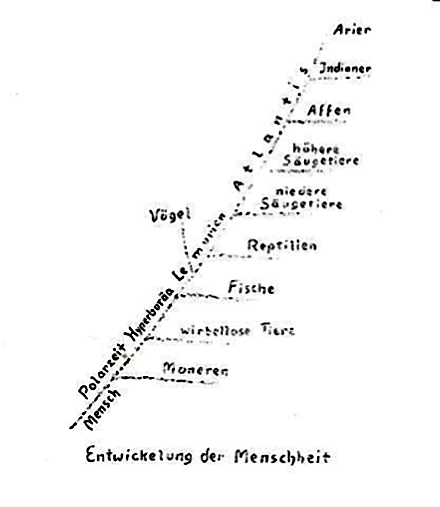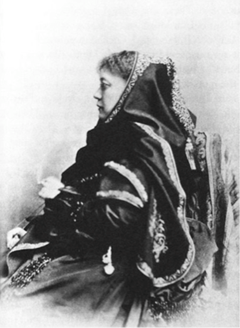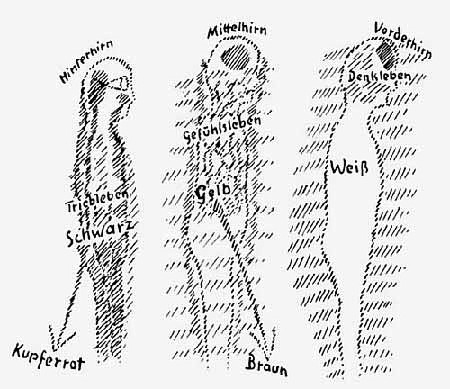racism
There can be no doubt that the situation for women has improved hugely since I started at UCL, 50 years ago. At that time women were not allowed in the senior common room. It’s improved even more since the 1930s (read about the attitude of the great statistician, Ronald Fisher, to Florence Nightinglale David).
Recently Williams & Ceci published data that suggest that young women no longer face barriers in job selection in the USA (though it will take 20 years before that feeds through to professor level). But no sooner than one was feeling optimistic, along comes Tim Hunt who caused a media storm by advocating male-only labs. I’ll say a bit about that case below.
First some very preliminary concrete proposals.
The job of emancipation is not yet completed. I’ve recently become a member of the Royal Society diversity committee, chaired by Uta Frith. That’s made me think more seriously about the evidence concerning the progress of women and of black and minority ethnic (BME) people in science, and what can be done about it. Here are some preliminary thoughts. They are my opinions, not those of the committee.
I suspect that much of the problem for women and BME results from over-competitiveness and perverse incentives that are imposed on researchers. That’s got progressively worse, and it affects men too. In fact it corrupts the entire scientific process.
|
One of the best writers on these topics is Peter Lawrence. He’s an eminent biologist who worked at the famous Lab for Molecular Biology in Cambridge, until he ‘retired’. Here are three things by him that everyone should read. |

|
The politics of publication (Nature, 2003) [pdf]
The mismeasurement of science (Current Biology, 2007) [pdf]
The heart of research is sick (Lab Times, 2011) [pdf]
From Lawrence (2003)
"Listen. All over the world scientists are fretting. It is night in London and Deborah Dormouse is unable to sleep. She can’t decide whether, after four weeks of anxious waiting, it would be counterproductive to call a Nature editor about her manuscript. In the sunlight in Sydney, Wayne Wombat is furious that his student’s article was rejected by Science and is taking revenge on similar work he is reviewing for Cell. In San Diego, Melissa Mariposa reads that her article submitted to Current Biology will be reconsidered, but only if it is cut in half. Against her better judgement, she steels herself to throw out some key data and oversimplify the conclusions— her postdoc needs this journal on his CV or he will lose a point in the Spanish league, and that job in Madrid will go instead to Mar Maradona."
and
"It is we older, well-established scientists who have to act to change things. We should make these points on committees for grants and jobs, and should not be so desperate to push our papers into the leading journals. We cannot expect younger scientists to endanger their future by making sacrifices for the common good, at least not before we do."
From Lawrence (2007)
“The struggle to survive in modern science, the open and public nature of that competition, and the advantages bestowed on those who are prepared to show off and to exploit others have acted against modest and gentle people of all kinds — yet there is no evidence, presumption or likelihood that less pushy people are less creative. As less aggressive people are predominantly women [14,15] it should be no surprise that, in spite of an increased proportion of women entering biomedical research as students, there has been little, if any, increase in the representation of women at the top [16]. Gentle people of both sexes vote with their feet and leave a profession that they, correctly, perceive to discriminate against them [17]. Not only do we lose many original researchers, I think science would flourish more in an understanding and empathetic workplace.”
From Lawrence (2011).
"There’s a reward system for building up a large group, if you can, and it doesn’t really matter how many of your group fail, as long as one or two succeed. You can build your career on their success".
Part of this pressure comes from university rankings. They are statistically-illiterate and serve no useful purpose, apart from making money for their publishers and providing vice-chancellors with an excuse to bullying staff in the interests of institutional willy-waving.
And part of the pressure arises from the money that comes with the REF. A recent survey gave rise to the comment
"Early career researchers overwhelmingly feel that the research excellence framework has created “a huge amount of pressure and anxiety, which impacts particularly on those at the bottom rung of the career ladder"
In fact the last REF was conducted quite sensibly (e.g. use of silly metrics was banned). The problem was that universities didn’t believe that the rules would be followed.
For example, academics in the Department of Medicine at Imperial College London were told (in 2007) they are expected to
“publish three papers per annum, at least one in a prestigious journal with an impact factor of at least five”.
And last year a 51-year-old academic with a good publication record was told that unless he raised £200,000 in grants in the next year, he’d be fired. There can be little doubt that this “performance management” contributed to his decision to commit suicide. And Imperial did nothing to remedy the policy after an internal investigation.
Several other universities have policies that are equally brutal. For example, Warwick, Queen Mary College London and Kings College London.
Crude financial targets for grant income should be condemned as defrauding the taxpayer (you are compelled to make your work as expensive as possible) As usual, women and BME suffer disproportionately from such bullying.
What can be done about this in practice?
I feel that some firm recommendations will be useful.
One thing that could be done is to make sure that all universities sign, and adhere to, the San Francisco Declaration on Research Assessment (DORA), and adhere to the Athena Swan charter
The Royal Society has already signed DORA, but, shockingly, only three universities in the UK have done so (Sussex, UCL and Manchester).
Another well-meaning initiative is The Concordat to Support the Career Development of Researchers. It’s written very much from the HR point of view and I’d argue that that’s part of the problem, not part of the solution.
For example it says
“3. Research managers should be required to participate in active performance management, including career development guidance”
That statement is meaningless without any definition of how performance management should be done. It’s quite clear that “performance management”, in the form of crude targets, was a large contributor to Stefan Grimm’s suicide.
The Concordat places great emphasis in training programmes, but ignores the fact that it’s doubtful whether diversity training works, and it may even have bad effects.
The Concordat is essentially meaningless in its present form.
My proposals
I propose that all fellowships and grants should be awarded only to universities who have signed DORA and Athena Swan.
I have little faith that signing DORA, or the Concordat, will have much effect on the shop floor, but they do set a standard, and eventually, as with changes in the law, improvements in behaviour are effected.
But, as a check, It should be announced at the start that fellows and employees paid by grants will be asked directly whether or not these agreements have been honoured in practice.
Crude financial targets are imposed at one in six universities. Those who do that should be excluded from getting fellowships or grants, on the grounds that the process gives bad value to the funders (and taxpayer) and that it endangers objectivity.
Some thoughts in the Hunt affair
It’s now 46 years since I and Brian Woledge managed to get UCL’s senior common room, the Housman room, opened to women. That was 1969, and since then, I don’t think that I’ve heard any public statement that was so openly sexist as Tim Hunt’s now notorious speech in Korea.
Listen to Hunt, Connie St Louis and Jenny Rohn on the Today programme (10 June, 2015). 
On the Today Programme, Hunt himself said "What I said was quite accurately reported" and "I just wanted to be honest", so there’s no doubt that those are his views. He confirmed that the account that was first tweeted by Connie St Louis was accurate
Inevitably, there was a backlash from libertarians and conservatives. That was fuelled by a piece in today’s Observer, in which Hunt seems to regard himself as being victimised. My comment on the Observer piece sums up my views.
|
I was pretty shaken when I heard what Tim Hunt had said, all the more because I have recently become a member of the Royal Society’s diversity committee. When he talked about the incident on the Today programme on 10 June, it certainly didn’t sound like a joke to me. It seems that he carried on for more than 5 minutes in they same vein. Everyone appreciates Hunt’s scientific work, but the views that he expressed about women are from the dark ages. It seemed to me, and to Dorothy Bishop, and to many others, that with views like that. Hunt should not play any part in selection or policy matters. The Royal Society moved with admirable speed to do that. The views that were expressed are so totally incompatible with UCL’s values, so it was right that UCL too acted quickly. His job at UCL was an honorary one: he is retired and he was not deprived of his lab and his living, as some people suggested. Although the initial reaction, from men as well as from women, was predictably angry, it very soon turned to humour, with the flood of #distractinglysexy tweets. It would be a mistake to think that these actions were the work of PR people. They were thought to be just by everyone, female or male, who wants to improve diversity in science. The episode is sad and disappointing. But the right things were done quickly. Now Hunt can be left in peace to enjoy his retirement. |
Look at it this way. If you were a young woman, applying for a fellowship in competition with men. what would you think if Tim Hunt were on the selection panel?
After all this fuss, we need to laugh.
Here is a clip from the BBC News Quiz, in which actor, Rebecca Front, gives her take on the affair.
Follow-up
Some great videos soon followed Hunt’s comments. Try these.
Nobel Scientist Tim Hunt Sparks a #Distractinglysexy Campaign
(via Jennifer Raff)
This video has some clips from an earlier one, from Suzi Gage “Science it’s a girl thing”.
15 June 2015
An update on what happened from UCL. From my knowledge of what happened, this is not PR spin. It’s true.
16 June 2015
There is an interview with Tim Hunt in Lab Times that’s rather revealing. This interview was published in April 2014, more than a year before the Korean speech. Right up to the penultimate paragraph we agree on just about everything, from the virtue of small groups to the iniquity of impact factors. But then right at the end we read this.
|
In your opinion, why are women still under-represented in senior positions in academia and funding bodies? Hunt: I’m not sure there is really a problem, actually. People just look at the statistics. I dare, myself, think there is any discrimination, either for or against men or women. I think people are really good at selecting good scientists but I must admit the inequalities in the outcomes, especially at the higher end, are quite staggering. And I have no idea what the reasons are. One should start asking why women being under-represented in senior positions is such a big problem. Is this actually a bad thing? It is not immediately obvious for me… is this bad for women? Or bad for science? Or bad for society? I don’t know, it clearly upsets people a lot. |
This suggests to me that the outburst on 8th June reflected opinions that Hunt has had for a while.
There has been quite a lot of discussion of Hunt’s track record. These tweets suggest it may not be blameless.
@alokjha @david_colquhoun #anecdotealert I spoke to a friend who was appalled by Hunt when she saw him speak a decade ago for same reasons.
— Dr*T (@Dr_star_T) June 16, 2015
@david_colquhoun @alokjha Sorry I can't. Told in confidence at the weekend. She's still in science research and it's not worth it.
— Dr*T (@Dr_star_T) June 16, 2015
That's v interestting. It's been alleged tht nobody has grumbled. It seems thay have, but they daren't come forward https://t.co/AlUz0mAJbt
— David Colquhoun (@david_colquhoun) June 16, 2015
19 June 2015
Yesterday I was asked by the letters editor of the Times, Andrew Riley, to write a letter in response to a half-witted, anonymous, Times leading article. I dropped everything, and sent it. It was neither acknowledged nor published. Here it is [download pdf].
|
One of the few good outcomes of the sad affair of Tim Hunt is that it has brought to light the backwoodsmen who are eager to defend his actions, and to condemn UCL. The anonymous Times leader of 16 June was as good an example as any.
|
Some quotations from this letter were used by Tom Whipple in an article about Richard Dawkins surprising (to me) emergence as an unreconstructed backwoodsman.
18 June 2015
Adam Rutherford’s excellent Radio 4 programme, Inside Science, had an episode “Women Scientists on Sexism in Science". The last speaker was Uta Frith (who is chair of the Royal Society’s diversity committee). Her contribution started at about 23 min.
Listen to Uta Frith’s contribution. ![]()
" . . this over-competitiveness, and this incredible rush to publish fast, and publish in quantity rather than in quality, has been extremely detrimental for science, and it has been disproportionately bad, I think, for under-represented groups who don’t quite fit in to this over-competitive climate. So I am proposing something I like to call slow science . . . why is this necessary, to do this extreme measurement-driven, quantitative judgement of output, rather than looking at the actual quality"
That, I need hardly say, is music to my ears. Why not, for example, restrict the number of papers that an be submitted with fellowship applications to four (just as the REF did)?
21 June 2015
I’ve received a handful of letters, some worded in a quite extreme way, telling me I’m wrong. It’s no surprise that 100% of them are from men. Most are from more-or-less elderly men. A few are from senior men who run large groups. I have no way to tell whether their motive is a genuine wish to have freedom of speech at any price. Or whether their motives are less worthy: perhaps some of them are against anything that prevents postdocs working for 16 hours a day, for the glory of the boss. I just don’t know.
I’ve had far more letters saying that UCL did the right thing when it accepted Tim Hunt’s offer to resign from his non job at UCL. These letters are predominantly from young people, men as well as women. Almost all of them ask not to be identified in public. They are, unsurprisingly, scared to argue with the eight Nobel prizewinners who have deplored UCL’s action (without bothering to ascertain the facts). The fact that they are scared to speak out is hardly surprising. It’s part of the problem.
What you can do, if you don’t want to put your head above the public parapet. is simply to email the top people at UCL, in private. to express your support. All these email addresses are open to the public in UCL’s admirably open email directory.
Michael Arthur (provost): michael.arthur@ucl.ac.uk
David Price (vice-provost research): d.price@ucl.ac.uk
Geraint Rees (Dean of the Faculty of Life Sciences): g.rees@ucl.ac.uk
All these people have an excellent record on women in science, as illustrated by the response to Daily Mail’s appalling behaviour towards UCL astrophysicist, Hiranya Pereis.
26 June 2015
The sad matter of Tim Hunt is over, at last. The provost of UCL, Michael Arthur has now made a statement himself. Provost’s View: Women in Science is an excellent reiteration of UCL’s principles.
By way of celebration, here is the picture of the quad, taken on 23 March, 2003. It was the start of the second great march to try to stop the war in Iraq. I use it to introduce talks, as a reminder that there are more serious consequences of believing things that aren’t true than a handful of people taking sugar pills.

11 October 2015
In which I agree with Mary Collins
Long after this unpleasant row died down, it was brought back to life yesterday when I heard that Colin Blakemore had resigned as honorary president of the Association of British Science Writers (ABSW), on the grounds that that organisation had not been sufficiently hard on Connie St Louis, whose tweet initiated the whole affair. I’m not a member of the ABSW and I have never met St Louis, but I know Blakemore well and like him. Nevertheless it seems to me to be quite disproportionate for a famous elderly white man to take such dramatic headline-grabbing action because a young black women had exaggerated bits of her CV. Of course she shouldn’t have done that, but it everyone were punished so severely for "burnishing" their CV there would be a large number of people in trouble.
Blakemore’s own statement also suggested that her reporting was inaccurate (though it appears that he didn’t submitted a complaint to ABSW). As I have said above, I don’t think that this is true to any important extent. The gist of it was said was verified by others, and, most importantly, Hunt himself said "What I said was quite accurately reported" and "I just wanted to be honest". As far as I know, he hasn’t said anything since that has contradicted that view, which he gave straight after the event. The only change that I know of is that the words that were quoted turned out to have been followed by "Now, seriously", which can be interpreted as meaning that the sexist comments were intended as a joke. If it were not for earlier comments along the same lines, that might have been an excuse.
Yesterday, on twitter, I was asked by Mary Collins, Hunt’s wife, whether I thought he was misogynist. I said no and I don’t believe that it is. It’s true that I had used that word in a single tweet, long since deleted, and that was wrong. I suspect that I felt at the time that it sounded like a less harsh word than sexist, but it was the wrong word and I apologised for using it.
So do I believe that Tim Hunt is sexist? No I don’t. But his remarks both in Korea and earlier were undoubtedly sexist. Nevertheless, I don’t believe that, as a person, he suffers from ingrained sexism. He’s too nice for that. My interpretation is that (a) he’s so obsessive about his work that he has little time to think about political matters, and (b) he’s naive about the public image that he presents, and about how people will react to them. That’s a combination that I’ve seen before among some very eminent scientists.
In fact I find myself in almost complete agreement with Mary Collins, Hunt’s wife, when she said (I quote the Observer)
“And he is certainly not an old dinosaur. He just says silly things now and again.” “Collins clutches her head as Hunt talks. “It was an unbelievably stupid thing to say,” she says. “You can see why it could be taken as offensive if you didn’t know Tim. But really it was just part of his upbringing. He went to a single-sex school in the 1960s.”
Nevertheless, I think it’s unreasonable to think that comments such as those made in Korea (and earlier) would not have consequences, "naive" or not, "joke" or not, "upbringing" or not,
It’s really not hard to see why there were consequences. All you have to do is to imagine yourself as a woman, applying for a grant or fellowship, and realising that you’d be judged by Hunt. And if you think that the reaction was too harsh, imagine the same words being spoken with "blacks", or "Jews" substituted for "women". Of course I’m not suggesting for a moment that he’d have done this, but if anybody did, I doubt whether many people would have thought it was a good joke.
9 November 2015
An impressively detailed account of the Hunt affair has appeared. The gist can be inferred from the title: "Saving Tim Hunt
The campaign to exonerate Tim Hunt for his sexist remarks in Seoul is built on myths, misinformation, and spin". It was written by Dan Waddell (@danwaddell) and Paula Higgins (@justamusicprof). It is long and it’s impressively researched. it’s revealing to see the bits that Louise Mensch omitted from her quotations. I can’t disagree with its conclusion.
"In the end, the parable of Tim Hunt is indeed a simple one. He said something casually sexist, stupid and inappropriate which offended many of his audience. He then confirmed he said what he was reported to have said and apologised twice. The matter should have stopped there. Instead a concerted effort to save his name — which was not disgraced, nor his reputation as a scientist jeopardized — has rewritten history. Science is about truth. As this article has shown, we have seen very little of it from Hunt’s apologists — merely evasions, half-truths, distortions, errors and outright falsehoods.
"
8 April 2017
This late addition is to draw attention to a paper, wriiten by Edwin Boring in 1951, about the problems for the advancement of women in psychology. It’s remarkable reading and many of the roots of the problems have hardly changed today. (I chanced on the paper while looking for a paper that Boring wrote about P values in 1919.)
Here is a quotation from the conclusions.
“Here then is the Woman Problem as I see it. For the ICWP or anyone else to think that the problem.can be advanced toward solution by proving that professional women undergo more frustration and disappointment than professional men, and by calling then on the conscience of the profession to right a wrong, is to fail to see the problem clearly in all its psychosocial complexities. The problem turns on the mechanisms for prestige, and that prestige, which leads to honor and greatness and often to the large salaries, is not with any regularity proportional to professional merit or the social value of professional achievement. Nor is there any presumption that the possessor of prestige knows how to lead the good life. You may have to choose. Success is never whole, and, if you have it for this, you mayhave to give it up for that.”
This is the third part of a series of guest posts on the curious Steiner Waldorf cult
The first part was The true nature of Steiner (Waldorf) education. Mystical barmpottery at taxpayers’ expense. Part 1
Part 2 was The Steiner Waldorf cult uses bait and switch to get state funding. Part 2
This post deals with the most contentious and serious aspect of Steiner schools, racism. It makes, in my view, a convincing argument that Steiner’s undoubtedly racist views remain a problem today. They can’t be dismissed simply by saying that Steiner was a child of his times.
This post was written by an ex-Steiner school parent, known on the web as @ThetisMercurio.
The essay supplies yet more reasons to think that Steiner schools are all based on pseudo science: Steiner’s Spiritual Science. It is important that we understand these schools because funding of these schools is imminent, through Michael Gove’s Free Schools policy.
Extracts from works by Olav Hammer and Peter Staudenmaier are included with the permission of the authors.
A Spiritual Elite
Our first two posts introduced Anthroposophy and our concerns about the state funding of Steiner Waldorf schools through the Free Schools policy. Anthroposophy, the belief system developed by Rudolf Steiner, undeniably underpins the pedagogy which informs teaching practice in Steiner schools. This is reflected in the course materials and recommended texts for Steiner trainee teachers, wherever these have been obtained.
|
What must be stressed is that an adherence to Anthroposophy and aspects of this pedagogy can lead teachers to make decisions about individual children based on race and disability, which many people would consider to be outright discrimination.
|
 Ceiling, First Goetheanum, Rudolf Steiner. Spirit worlds. |
This discrimination may be undeclared and subtle but we believe it is, when rightly understood, within the comprehension and scope of the Equality Act 2010 as interpreted by the Equality and Human Rights Commission. Does the ideological drive towards Free Schools justify a breach in the rights of children not to be exposed to such potentially damaging practice?
In this post I write about the history of Anthroposophy, and how Steiner’s privileged status amongst adherents has obscured understanding of Steiner Waldorf education. Although I’ll focus on Steiner’s race doctrines, it’s important to understand that an anthroposophical belief in karma and reincarnation must have an impact on children with learning disabilities. Some of the most distressing personal accounts on parent forums have described an encounter with this particular aspect of Steiner’s dogma. Liz Ditz, a writer on education and learning disabilities, has the same concern with regard to Waldorf Charters in the US:
“Waldorf/Steiner [is] particularly pernicious for children with educational special needs such as dyslexia, ADHD, and autism. Because of the underlying beliefs in karma and reincarnation, teachers at Waldorf/Steiner tend to believe that such educational challenges are part of a child’s destiny to “work out”. The Waldorf/Steiner attitude does not satisfy US laws relative to educating students.”
Roger Rawlings indicates Steiner’s thinking on disability on Waldorf Watch and the UK site EASE online has an account of ‘karma in the classroom’ by a parent with a Steiner training. Swedish blogger Alicia Hamberg describes the University of Aberdeen’s programme on Rudolf Steiner’s curative pedagogy, which draws directly on Steiner’s clairvoyantly acquired ideas. This area demands greater investigation before English Steiner schools can be assumed to satisfy discrimination legislation regarding children with disabilities.
There is a determined lack of interest and comprehension about the nature of Anthroposophy amongst those responsible for overseeing the inspection of Steiner schools (Ofsted, which delegates to the SIS) and also amongst those who will make the decision to fund particular schools. It may appear too difficult. The structure of an esoteric belief system, with gradually imparted ‘knowledge’: impenetrable texts, study groups, a tradition of communicating certain information orally (a great deal isn’t written down) and a distrust of critical thinking, means that Steiner teachers themselves can be confused about the nature or real life implications of Steiner’s dogma, as well as largely ignorant of the Waldorf movement’s history. But there is an undeclared hierarchy of anthroposophical knowledge and influence within a Steiner school’s college of teachers; decisions about individual children are often steered by collegiate anthroposophical impulse. Obfuscation is deliberate: when explaining Anthroposophy, as far as the movement is concerned the answer depends on who is asking.
We can’t afford to be ignorant or to accept Steiner schools on their own terms. The history of Anthroposophy and thereby Steiner Waldorf education is essential reading. That history contains a warning, and we ignore this at our own risk.
Lessons on Spin from the New Schools Network
In November 2009, a meeting was held in London between representatives of the Steiner Waldorf Schools Fellowship and English Steiner Schools, including Emma Craigie, Rachel Wolf of the New Schools Network and Sam Freedman, Tory special advisor for education. It was called: ‘Moving forward, a special pre-election seminar about possible developments in the state funding opportunity for Steiner schools’.
A transcript of this seminar appeared online in March 2010 on both UK Anthroposophy and Liberal Conspiracy. I can reiterate that the transcript is a genuine account of a public meeting. No one present has to the best of our knowledge complained that this is not the case. Since there appears to be no attempt to dissuade from pursuing Free Schools funding the Steiner schools and initiatives mentioned in our second post (in fact many more than three of these schools are well advanced) I believe it is important to revisit this seminar.
The NSN is already under scrutiny. After an intervention by Lisa Nandy, Labour MP for Wigan, it has been the recipient of regulatory advice from the Charity Commission regarding its responsibilities as an independent charity. The clarity of NSN funding arrangements has also been questioned. I suggest that if Rachel Wolf is expected to advise parents on the best way to educate their children, she cannot afford, in the case of 18 or more potential Steiner Free Schools, to ignore these two salient problems in the path of state funded Steiner education:
1) Accounts from parents who are or who have been unhappy with the Steiner schooling system and those who have had negative experiences associated with the schools.
and
2) The writings of Rudolf Steiner and Anthroposophy
I agree with those at the seminar that the latter will be the greater problem. In fact, I assert that it’s an insurmountable one, or at least that it should be. This can’t be cured by good PR or by changing a name. Should the success of the Free Schools policy need to be bolstered by protecting Steiner Waldorf’s reputation from disenchanted parents, students and teachers, it will mean a concerted effort to ensure their voices are not heard or their stories are discredited. Such a tactic would be unsustainable, to put it mildly.
In the seminar, it was mentioned that there are racist aspects to Steiner’s writings. This accusation is far from new and it seems it was no surprise to those present. If Sam Freedman is aware of a potential threat to the reputation of the state from the funding of Steiner schools with an adherence to ‘Steiner says’, (an adherence which troubled the writers of the 2005 Woods report) he should be concerned that since the closure of the University of Plymouth Steiner BA there are no publicly accountable Steiner Waldorf teacher training courses in the UK. It’s unclear where the teachers are going to come from, especially since it appears there will be no requirement for Free Schools teachers to be formally trained. British Steiner Waldorf training will be essentially ‘in-house’ (perhaps at the Steiner Academy Hereford).
The issue of whether racism exists as an active agent within Anthroposophy was not addressed seriously at the pre-election meeting, although anthroposophical distinctions regarding both race and disability have human consequences and political implications.

Steiner’s drawing of the “evolution of humankind” through the various stages – Hyperborea, Lemuria, Atlantis — from lower to higher forms (fish to reptiles to mammals etc), with the top three categories marked “apes,” then (American) “Indians,” then at the very top “Aryans.” Steiner’s 1907 lecture refers to both apes and Indians as “decadent side branches” of evolution.
Rudolf Steiner, 1907. Menschheitsentwickelung und Christus-Erkenntnis (Dornach: Rudolf Steiner Verlag, 1981)
Pervasive racial assumptions run throughout Rudolf Steiner’s work. Anthroposophy itself is : “built around a racial view of human nature arranged in a hierarchical framework,” and Steiner’s doctrine awards a higher or lower place in the spiritual evolution of mankind for certain races, with their attendant characteristics. If Freedman believes the schools can simply not teach what Steiner said, he shows a fundamental misunderstanding of the nature of Anthroposophy, and of its role within Steiner schools. Anthroposophy is not taught to the children: it informs the pedagogy. It is taught to the teachers. But since it is an esoteric religion, with hidden knowledge, that teaching is often opaque. In addition, Anthroposophy is not a tradition in which critical thinking is prized, indeed the intellectual is suspect; Steiner’s spiritual science has its own, privileged internal logic and route to acuity. As Olav Hammer, a Professor of the history of religions, comments in his accessible book ‘Claiming Knowledge’:
“..anthroposophy has an overtly formulated epistemology, which claims rational status for its visionary means of attaining knowledge.”
Hammer explains:
“For the anthroposophist, spiritual science is as inexorably logical as the natural sciences. The path towards attaining knowledge of the higher worlds, including insights into the exact mechanisms of reincarnation, lie open to those who practice the methods of Geisteswissenschaft [spiritual science] to the full. It is not only part of Steiner’s experience, but also potentially part of the experience of every individual. A carefully outlined series of meditative exercises describes how one can attain knowledge of the spiritual truths.”
and the system is itself insulated from critique:
“Steiner frees himself from the need for empirical investigation by claiming the ability to clairvoyantly access the Akashic record. In the Akashic record, Steiner found innumerable specific details on the workings of the cosmos and the human being, all presented as empirical facts.”
Hammer notes that Steiner’s method of spiritual science may appear democratic but is in reality autocratic. The only truly authentic insights are Steiner’s.
For those who believe they are developing clairvoyant faculties in pursuit of Anthroposophy’s Higher Worlds; Steiner’s racist doctrines, existing within an anthroposophical structure of reincarnation and karma, can be seen as essentially benevolent and redemptive. Though adherence (and awareness) certainly differs amongst teachers, it is impossible to remove Anthroposophy from the Steiner school pedagogy, from the required reading on the teacher training courses, from the mission of the schools. It would be entirely naive to imagine anthroposophical allegiances and beliefs in Steiner Free Schools could be policed by the DfE, especially as British courses disappear from public view or teachers are trained in other countries. Nor can the public be shielded from evidence of Anthroposophy’s precise nature and history.
Anthroposophy, and consequently the Steiner Waldorf movement, resist external critical analysis. The occult has until fairly recently been largely ignored by serious academics, and those who have explored Theosophy and other esoteric movements have been generally sympathetic to the possibility of supernatural agency. But, as we’ve seen with Olav Hammer as example, this has changed. There is now extensive academic research into the foundations of Anthroposophy and the development of Steiner Waldorf schools, enabling a non-arcane understanding of anthroposophical texts. Much of this is of course in German, including Helmut Zander’s 2007 two volume study, ‘Anthroposophie in Deutschland’.
Zander describes the ad hoc nature of the first Waldorf school, as Steiner borrowed much from already existing educational reform movements as well as from traditional models, and added his own spiritual insights. The results could only in some areas be thought of as progressive: the schools were co-educational and did not focus on exams. But from the beginning, the Waldorf system was teacher-led, not child-led and had strong authoritarian tendencies.

Rudolf Steiner 1861-1925 – Spiritual Insights
Most importantly, Zander contextualizes Steiner as a historical figure, without needing to pass judgements on the accuracy of his supernatural claims. He focuses on the political landscape in which Steiner existed in real, not occult terms. And he demonstrates the significant role of Steiner’s race theories within his work, noting how anthroposophical race doctrine frequently involves implicit or explicit value judgements. Even though Zander encourages dialogue with anthroposophists who can tolerate some kind of external analysis, an extreme voice still demanded Zander’s university revoke his degree, on the grounds that he couldn’t determine the validity of any of Steiner’s claims without himself attaining ‘knowledge of the higher worlds’. Crazy as this sounds, it’s the singular manifestation of a familiar anthroposophical motif, a demand that Anthroposophy be understood – and respected, exclusively on its own terms.
Rudolf Steiner and race: the path toward the universal human
One of the most authoritative writers about Anthroposophy in English is American historian Peter Staudenmaier. His recent PhD in modern history, written at Cornell, concerns Anthroposophy in Germany and Italy from 1900 to 1945. A fluent German speaker, Staudenmaier had access to Steiner’s untranslated work as well as to original archive material. He stresses that Steiner’s prolific output can be internally contradictory, enabling supporters to claim that anthroposophical race doctrine is incidental or misunderstood. But nevertheless, there’s a dominant and explicable theme, owing much to Steiner’s occult interpretation of German nationalism. Steiner’s attitude to Jewishness is an example of insular preoccupations:
“The nature of Steiner’s hostility to Jewishness was thus both ordinary and anomalous; it incorporated the common misconceptions of the era and simultaneously transcended these within the peculiar framework of “occult science”. It was not so much hatred or fear of Jews that animated Steiner’s mature antisemitism, but ignorance of contemporary Jewish life, of modern Jewish culture and history, as well as a myopic commitment to German spiritual superiority. What Steiner did know about Judaism, moreover, was generally refracted through a Christian and Germanocentric lens.” Peter Staudenmaier ‘Rudolf Steiner and the Jewish Question’ Leo Baeck Inst. Yearbook 2005
Steiner’s claims to ‘spiritual science’ to an extent reflect an earlier association with zoologist and social Darwinist Ernst Haeckel. (Richard Dawkins comments in ‘The Greatest Show on Earth’ that Haeckel was “perhaps Darwin’s most devoted disciple in Germany” and while praising Haeckel’s draughtsmanship adds: “the devotion was not reciprocated”.).
|
Staudenmaier suggests a mutable concept of evolution may have mediated Steiner’s shift from ‘secular to sacred’, but that it was a conversion to Mme Blavatsky’s occult movement, Theosophy, that most inspired Steiner’s racial theories:
|
 Madame Blavatsky: Theosophist and medium. |
“Steiner’s doctrine of racial evolution is more than a biological appendage to his spiritual cosmology. For Anthroposophy as for Theosophy, evolution is the link between the human and the divine, it is a process supervised by higher powers and a vehicle for the soul’s elevation and purification. [ ] The guiding thread throughout Steiner’s race mythology is the motif of a small, racially advanced group progressing into the next era while the great mass of backward populations declines. In the current era, the dominant race is the Aryan race, which evolved out of a small number of specially advanced colonists from Atlantis. In Steiner’s words: “Ever since the Atlantean Race began slowly to disappear, the great Aryan Race has been the dominant one on earth.”
There is a crucial difference for Steiner between ‘race development’ and ‘soul development’:
“The two must not be confused. A human soul can develop itself in such a way that it incarnates in a particular race within a given incarnation. If it acquires certain capacities in this incarnation, then in a later incarnation it can incarnate in a different race.”
Rudolf Steiner, Christus und die menschliche Seele [Christ and the human soul] (Dornach: Rudolf Steiner Verlag, 1997), 92
Staudenmaier elucidates:
“As the incarnating souls ‘became steadily better and better’, Steiner explained, ‘the souls eventually passed over into higher races, such that souls which had earlier been incarnated in completely subordinate races developed themselves upwards onto a higher level and were able to incarnate later into the physical descendants of the leading population of Europe’. Steiner further contended that the very existence of different racial groups on the Earth at the same time was a cosmic mistake, a detour from the proper route of humankind’s development. This claim was tied to Steiner’s vision of the eventual emergence of a ‘Universal Human’, the goal of his teleological conception of evolution. While pointing toward the ultimate disappearance of race as a meaningful factor in human existence, Steiner’s theory of the Universal Human is built around a contrast with ‘lower types of people,’ which constitute the necessary counterpart to the ‘uniform, perfect, beautiful type of human being,’ the cosmic goal that underlies ‘the meaning of our whole earthly evolution’.”
Though potentially spiritually ‘enlightened’ to the initiate, Steiner’s views on race remain reprehensible:
“The white population, then, represent normal human beings who continue to progress, while Asians and Africans are abnormal peoples who were not as capable of evolving. Statements like these can be found throughout Steiner’s works, and may reflect the prejudices prevalent among educated Europeans of his era. Perhaps the most instructive instances are Steiner’s various statements about black people. [ ] Addressing the first generation of Waldorf teachers in 1923, Steiner responded to a question about teaching French with the following remarks:
“The French are committing the terrible brutality of moving black people to Europe, but it works, in an even worse way, back on France. It has an enormous effect on the blood and the race and contributes considerably toward French decadence. The French as a race are reverting."
Peter Staudenmaier, Race and redemption: Racial and Ethnic Evolution in Rudolf Steiner’s Anthroposophy : Nova Religio 2008

All must have disclaimers
Returning to the seminar in London discussing Free Schools funding for Steiner Waldorf: Should Steiner schools engineer a more multi-cultural image? This strategy would cause embarrassment to a government facing the understandable fury of non-white Steiner parents who come across Steiner’s race doctrines – unless Rachel Wolf persuades Cornell to revoke Dr Staudenmaier’s PhD (with assistance from dedicated anthroposophical defenders). Waldorf’s biggest problem, acknowledged after the departure of Freedman and Wolf, is undoubtedly the teachers:
“It was felt that there may be some difficulty in making a blanket rebuttal of all Anthroposophy because many people throughout the Steiner schools system, especially teachers, strongly support many aspects of that belief system. If teachers were asked to make a blanket rebuttal of Anthroposophy, many of them may not do this.”
They cannot do this. For many, Anthroposophy is the point. Rudolf Steiner is considered by his followers to be irreproachable, a spiritual master blessed with clairvoyant powers. Pull the thread of the race doctrines out of the design, there is a corresponding pressure on Steiner’s doctrine of reincarnation and karma. The Steiner Waldorf pedagogy itself rests on anthroposophical dogma. Although a reappraisal of doctrine is not without precedent within religious movements, it would be especially problematic for Anthroposophy, as an esoteric belief system. Knowing this, the easiest way to protect the movement is to be pragmatic and to issue disclaimers. But these disclaimers bear analysis, since many anthroposophists still defend Steiner’s racial and ethnic teachings; believing them, as Staudenmaier explains, to be “humanitarian, tolerant, and enlightened.”
Here is the (current) disclaimer on racism from the Steiner Waldorf Schools Fellowship (SWSF).
|
Is it true that some of Rudolf Steiners writings and lectures contained statements that could be interpreted as racist? Yes. Even though Steiner’s ideas are based on a profound respect for the equality, individuality and shared humanity of all people, regardless of race or ethnic origin, his works do contain a small number of quotations that are discriminatory. The SWSF rejects these statements and all racism. However, it should be noted that other great thinkers of his time including Darwin, Schweitzer, Gandhi and Carl Jung also spoke of race in a way that offends modern sensibilities. This does not render them or their work ‘racist’. It is ironic that Steiner schools sometimes have to defend themselves against these accusations. Our schools thrive on every continent, in every culture and within a wide range of ethnic contexts. For example, during the period of the apartheid regime in South Africa, the only school catering for mixed races was a Steiner Waldorf school & today there are schools following Steiner philosophy of education in diverse cultures & communities, including: Israel, Egypt, Kenya, Sierra Leone, Taiwan, Japan, Brazil or Hawaii, over 60 countries in all. It should be noted that all the Steiner schools in the UK actively are opposed to all forms of discrimination against any person or group of people on the grounds of race, gender, faith, disability, age and sexual orientation and are committed to promoting equality of opportunity and reflecting the diversity of the children, staff and parents served by their school. Further clarification about this can be found on the Statements page of the European Council for Steiner Waldorf Education website (by clicking the ‘Waldorf schools against discrimination’ link). |
The first word is unusual, though the disclaimer’s tone betrays the movement’s haughty antipathy to external analysis – and frankly it’s simply untrue. There are a very large number of Steiner’s pronouncements which could not only be interpreted as racist, they are racist. Saying they are not racist costs the SWSF nothing and will not make them disappear. (To be candid, many of Steiner’s statements clearly discriminate between races in both an unpleasant and prosaic manner, the ‘spiritual’ is no excuse.)
But the statement reveals a significant misunderstanding of racism. It is historically naive to imagine that being represented in diverse cultures and communities can define a worldview. Catholic schools are similarly represented, this doesn’t alter the nature of Catholic teachings; Anthroposophy’s racial doctrines do not magically change because there are Steiner Waldorf schools in Kenya. The disclaimer also ignores the fact that South African Waldorf schools were founded by Max Stibbe (the Waldorf school in Pretoria is still named after him), a vocal supporter of apartheid. Peter Staudenmaier comments:
“[Stibbe] was also the editor of the Dutch Waldorf journal Ostara, as well as the founding editor of an even more influential Waldorf journal, Vrije Opvoedkunst, in 1933. Vrije Opvoedkunst is where Stibbe published his racist articles in the 1960s, which formed the basis for the "racial ethnography" courses in Dutch Waldorf schools well into the 1990s.”
Nor can the recent promotion of a non-white titular Vice Principal (at the state funded 315 pupil (£5.2 million) Hereford Steiner Academy cancel out Steiner’s racial doctrines.
In addition, under “What is Anthroposophy?’ the SWSF states:
“Like many inspiring thinkers from the past, Ghandi and Darwin being other examples, Rudolf Steiner provides us with important insights which continue to be relevant today, as well as statements which conflict with our contemporary understanding of inclusivity and equality.”
It’s extraordinary that in a description of Anthroposophy by the Steiner Waldorf movement’s umbrella organisation in the UK, there’s no mention of karma, reincarnation, higher worlds, spiritual science etc, or the fact that anthroposophists believe Steiner was clairvoyant. Zoologists do not believe Darwin was clairvoyant – nor did Darwin teach an occult racial doctrine. Steiner’s unique status amongst his followers means that he cannot be excused as simply ‘a man of his time’. Even so, such racial ideas were rejected by many of Steiner’s contemporaries.
From a historical perspective, racial remarks should not be assessed according to whether they offend modern sensibilities. What makes a particular text racist is its content, what it actually says about race.

The 2nd Goetheanum, designed by Steiner – world centre for Anthroposophy – Dornach, Switzerland
The European Council for Steiner Waldorf Education) disclaimer document ‘Waldorf schools against discrimination’, linked to by the SWSF, states:
“Anthroposophy, upon which Waldorf education is founded, stands firmly against all forms of racism and nationalism. Throughout Steiner’s work there is a consistent anti-racist sentiment and he frequently described racist views as being anachronistic and antithetical to basic human values and dignity. The Waldorf schools are aware, however, that occasional phrases in Rudolf Steiner’s complete works are not in concordance with this fundamental direction and have a discriminatory effect.”
This is extraordinarily mendacious, and only sustainable if no one else – specifically no politician – reads any Steiner. The ‘discriminatory effect’ is reflected in the actions and decisions of teachers in the classroom, behaving in accordance with anthroposophical dogma which they may not even believe is racist. It should not be confused with an accusation that Steiner Waldorf schools openly discriminate on grounds of race, for example at point of entry, which they do not. Whether Steiner’s teachings themselves are ‘discriminatory’ makes little sense in an early twentieth century context – what matters is that they are racist. A confusion between discrimination and racism further highlights the worrying anthroposophist misunderstanding of racism.
This ECSWE disclaimer is cited by the Rudolf Steiner school South Devon. This is one of three English Steiner schools nearing funding, with the support of the Tory MP for Totnes, Dr Sarah Wollaston. The school also seeks to distance itself from “any racism stated or implied in any of Rudolf Steiner’s speeches and writings (dating from the mid -1880s to his death in 1925)” It’s alarming to find this on a school website bearing the name of the seer in question. But the disclaimer doesn’t acknowledge any statements by Steiner, much less examine their racial content. There’s no explanation of why this statement needs to be there.
On the same ECSWE site there’s a link to a document called: ‘Overcoming Racism through Anthroposophy: Rudolf Steiner and Questions of Race’. This is an audacious title. Peter Staudenmaier responds (hyperlinks mine):
“Far from a denunciation of any and all racist statements made by Steiner, it is a defense of Steiner’s racial teachings. It also claims that Steiner opposed antisemitism throughout his life, that he was deeply opposed to any philosophy of racial or ethnic superiority, and so forth. The document is co-authored by Detlef Hardorp and Lorenzo Ravagli, among others, who have very vocally and quite explicitly defended a range of Steiner’s racist arguments. This remains the mainstream position for both the Waldorf movement and the broader anthroposophist movement today.
In my view, a perfunctory ‘denunciation’ of ‘any and all racist statements made by Steiner’ — even if we could find such a denunciation from some anthroposophist body or other — would miss the point. If anthroposophists want to face up the racist components in their ideological legacy, they need to analyze and understand what Steiner taught about race, not pre-emptorily denounce it, and they need to figure out how to revise the overall conceptual structure of anthroposophy, which in its current form is built to a significant extent around racial premises. Simply waving away the problem with a vague gesture of disassociation accomplishes nothing toward that end, indeed it actively hinders the steps that could lead toward that end.”
A 1998 report by Dutch anthroposophists concluded there were no ‘racist teachings’ in Rudolf Steiner’s work. Peter Staudenmaier believes that an attempt by anthroposophists to come to terms with Steiner’s race doctrines, the “Frankfurt Memorandum” 2008, is flawed partly by using that Dutch report as its inspiration.
Significantly, former Waldorf teacher Tom Mellett notes parallels between the Steiner movement’s denunciation of Steiner’s racism and statements made by the Catholic church regarding priestly sex abuse.
Race in the classroom
Anthroposophy impacts on real children. Ray Pereira noticed the racist overtones in his child’s ‘Steiner stream’ in an Australian school:
“Mr Pereira, who is from Sri Lanka, said his concerns about Steiner’s racist beliefs were realised when his children were not allowed to use black or brown crayons because they were “not pure”. He said Steiner teachers at the state-run school recommended they not immunise their children because it would lead to the `‘bestialisation of humans”.”
Two years ago, at an established English Steiner school now applying for Free Schools funding; a British couple were alarmed when their 12 year old daughter (who’d been at the school for a year) told them a German teacher had read out the word ‘nigger’ from a book of poems, a standard text in Steiner schools. The mother reports that the teacher did not agree with the children that this is a racist word, indeed it was her daughter who was punished for refusing to back down. As a foster parent for many years and a mentor for Kids’ Company, the mother concerned is used to dealing with challenging situations but the school’s response to this incident (amongst others) shocked her. The staff seemed not to take the family’s concerns seriously and delayed taking action. Looking online for information on Steiner schools’ policies regarding racism, the mother discovered that in the book ‘How to Know Higher Worlds’, by Rudolf Steiner, (an edition last published 2008, Anthroposophic Press) a book on which one of the school trustees was basing workshops, there is an account of ‘reincarnation through the races’:
“Peoples and races are after all, merely different developmental stages in our evolution toward a pure humanity. The more perfectly that individual members of that race or people express the pure, ideal human type – the more they have worked their way through from the physical and mortal to the super sensible and immortal realm – the “higher” this race or nation is.”
In a formal meeting with the school, the father, who is black, calmly read aloud a quote from Steiner which stated that: ‘the black man is the child of the races’. There was no response from those present, presumably the trustees convinced themselves it was outside the remit of the discussion. The couple were shown the school’s discrimination document. But they report that when they asked the school’s Education Coordinator if he believed in Steiner’s doctrine of the reincarnation of the soul through racial hierarchies, he reddened with anger and refused to answer.
This critical Steiner mother notes an obvious inconsistency. In reply to a trustee’s defence that individuals chose which bits of Steiner to believe:
“I asked her, how they could do that when Steiner received his knowledge clairvoyantly – if it all came from the spirit world surely it was all true? I also said I didn’t believe that’s where he got his knowledge, unless the spirit world itself is racist.”
The child involved is now at school elsewhere. Her family arranged for a racism awareness day to be conducted at the Steiner school; this is required of every educational setting.

A Steiner Waldorf classroom (from here)
In response to Waldorf supporters’ claims that their teachers are simply not capable of racism and that Steiner schools are both enlightened and benign, Peter Staudenmaier writes:
“Many forms of racist belief are not intentionally sinister, but are instead embedded in high-minded, benevolent, and compassionate orientations toward the world. It is this type of racist thought, whose historical heritage extends through the White Man’s Burden and many forms of paternalistic racial ideology, that may find a welcome home in some Waldorf schools and other anthroposophical contexts, where it can perpetuate its ideas about race under the banner of spiritual growth and wisdom. This kind of racist thinking spreads more readily precisely because it is not tied to consciously sinister intentions. Seeing through this kind of racism – which, furthermore, often has more widespread and more insidious effects on the real lives of real people than the intentionally sinister variety does – means paying attention to the background beliefs that animate a project like Waldorf, whether among its founding generation or today.”
Staudenmaier is a historian, not primarily a critic of Steiner Waldorf education. But a knowledge of the history of the anthroposophical movement is essential if we are to make any sense of the difficulties the schools face today:
“I would be pleased if my research provided an opportunity for Waldorf admirers to ponder this contentious history and take its lessons seriously. What is worrisome about the Waldorf movement’s continued failure to address anthroposophy’s racial legacy is not that Waldorf schools in the twenty-first century will start churning out little Hitler youths; what is worrisome is that Waldorf advocates and sympathizers may unknowingly help prepare the ideological groundwork for another unforeseen shift in the broader cultural terrain, in which notions of racial and ethnic superiority and inferiority could once again take on a spiritual significance that lends itself all too easily to practical implementation in a changed social and political context. For this reason among others, I strongly encourage those involved in Waldorf endeavors to take another look at the history of their movement and the doctrines at its core.”
There is a reprise of these themes in an insightful article by novelist Hari Kunzru.
If those concerned with Steiner Waldorf education read nothing else, they should read Peter Staudenmaier’s article “Anthroposophy and Ecofascism”. It is a compelling account of Anthroposophy’s history; essential reading, too important to ignore.
Like Peter Staudenmaier, I have an interest in progressive forms of education. Steiner Waldorf education, far from being progressive or democratic, is dogmatic, autocratic and anti-intellectual. The persuasive lobby for state funded Steiner schools in my opinion misrepresents Anthroposophy, there are no exceptional applications. It is this lack of honesty that causes most concern. Steiner schools have failed a particular responsibility to their clients, not shared by Church of England or Catholic schools, to explain at the beginning what is for most parents an unfamiliar world-view.
Most seriously, mindful of Steiner’s dogma of karma and the reincarnation of the human soul through the races: If genuine equalities impact assessments were conducted on these schools, in my view it is inconceivable that the implications for children from black and ethnic minorities, and those with learning difficulties, would permit the funding of Steiner education.

German children 1930s. Image from Black News Tribune
Postscript
Download a pdf file of Anthroposophy’s racial doctrines: explanation and examples by Dr Peter Staudenmaier.
